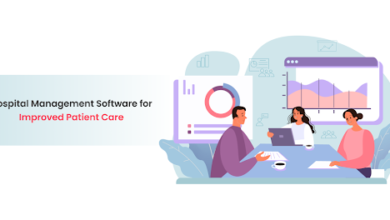Code Blue HIMSS Keysight Expose Paradoxical Challenges in Healthcare Software Testing

In the high-stakes world of healthcare, the phrase “code blue” sends shivers down the spine. Strikingly, the healthcare software system itself is now gasping for air, grappling with an unprecedented digital deluge. From EMRs to PACS, healthcare software now account for nearly one-third of the global data. To ensure them function properly, the need for comprehensive, robust software testing is palpable. Yet, a recent survey revealed a paradox:
Despite a unanimous commitment to software quality assurance, 94% of decision-makers admitted insufficient test coverage increasingly risks patient lives
Read on as we unravel this perplexing paradox, scrutinizing the underlying causes, and prescribing a remedy for healthcare QA professionals and IT leaders eager to fortify their testing strategies for the future.
The Diagnosis: Scalability Struggles
While other industries embracing test automation at scale, the healthcare sector has been slow to follow suit. In the study, only 15% of healthcare providers have adopted modern test automation platforms, with 38% still relying on manual testing methods and 44% opting for DIY approaches. As EMRs become increasingly customized, interlinked, and frequently upgraded, these outdated methods fall short in terms of scalability and reusability, resulting in massive technical debt and inconsistent test coverage. Consequently, nearly 67% of respondents felt inadequately resourced for future requirements.
The Aegrescit Medendo: DIY Dilemma
The DIY approach might initially appear appealing, but over time, it can prove counterproductive, as the Latin proverb “aegrescit medendo” goes – the cure can be worse than the disease. For instance, only 38% of survey respondents were satisfied with their organization’s ability to fulfill all pre-release requirements.
The DIY approach’s most significant barrier is the need for extensive technical expertise and a steep learning curve. Healthcare providers often struggle to find the necessary in-house talent to create and maintain test cases effectively. Without a solid grasp of test automation frameworks, managing the intricate processes of test creation, execution, and test case management becomes overwhelming.
Moreover, QA teams may think that DIY as a cheaper option, only to find out that invariably wind up needing additional functionalities that require new custom modules or coding. This can lead to delays in testing and deployment, increased costs, and potential risks to patient safety.
The Cure: Modern Test Automation Platform
Fear not, for there is a cure in sight. The study reveals that early adopters who embraced test automation platforms have seen remarkable improvements in their test analytics and scalability for future challenges. Specifically, test automation platforms can:
- Boost satisfaction with organizations’ testing analytics by a staggering 1.8X
- Enhance satisfaction with organizations’ ability to scale and meet emerging testing requirements by an impressive 2.2X
Embrace Automation and Secure the Future of Care
As the healthcare industry accelerates its digital transformation, manual and DIY testing methods are quickly becoming obsolete. The responsibility now lies with healthcare IT leaders to automate software testing to safeguard the quality and reliability of their systems, protecting not only patients but also physicians and healthcare workers.
According to the HIMSS study, within the next five years, the proportion of healthcare providers primarily utilizing automated software testing will skyrocket from 25% to 75%. The time to act is now.
Don’t miss out on the invaluable insights within the “Vital Signs” report [link]. It delves into the impact of manual and DIY approaches on patients, physicians, and healthcare workers, while also exploring the effect of emerging requirements on interoperability and the benefits of affordably scaling testing through an AI Healthcare chatbot software test automation platform.





